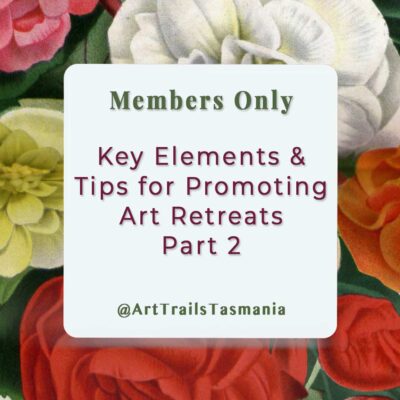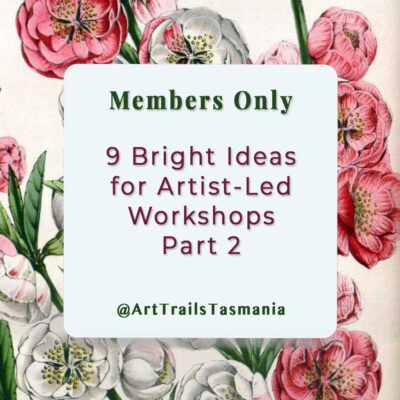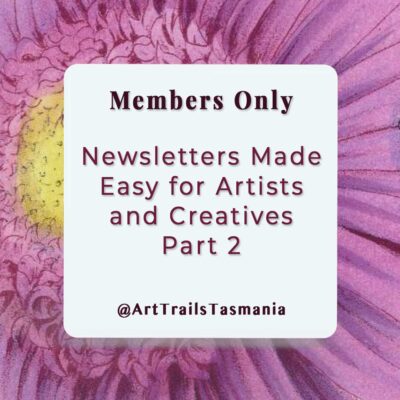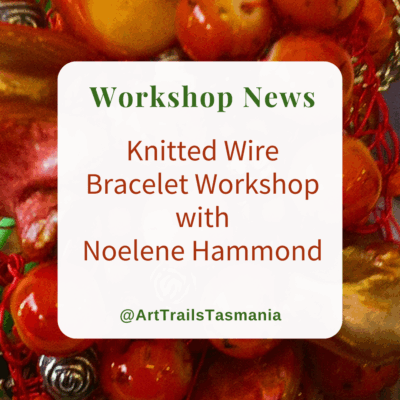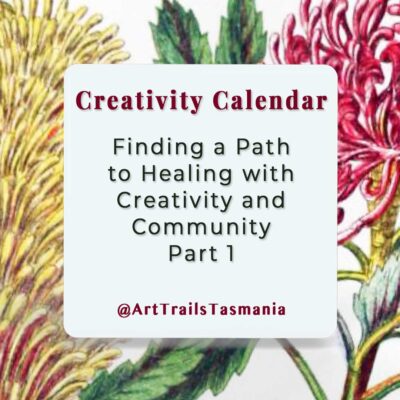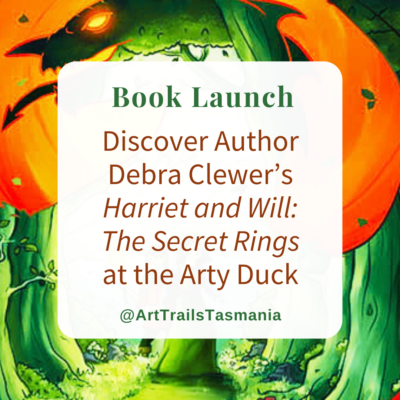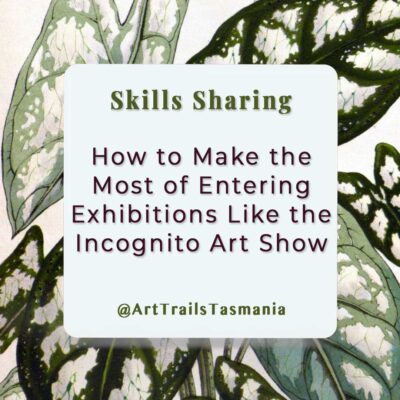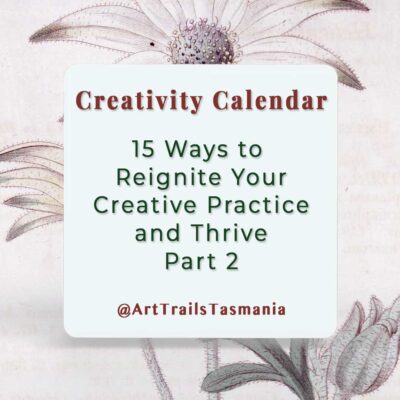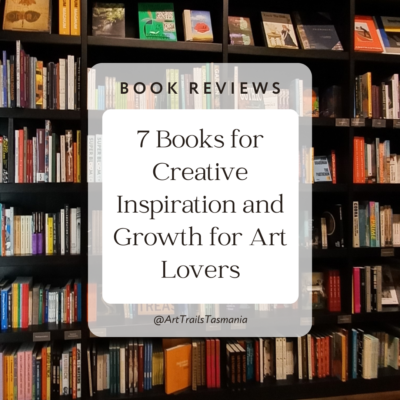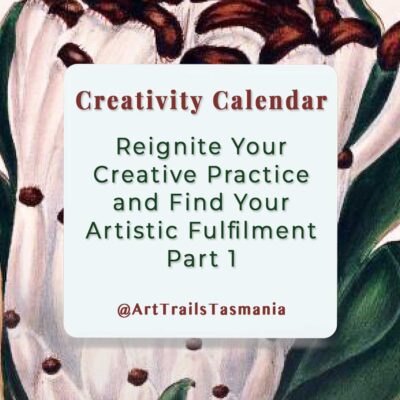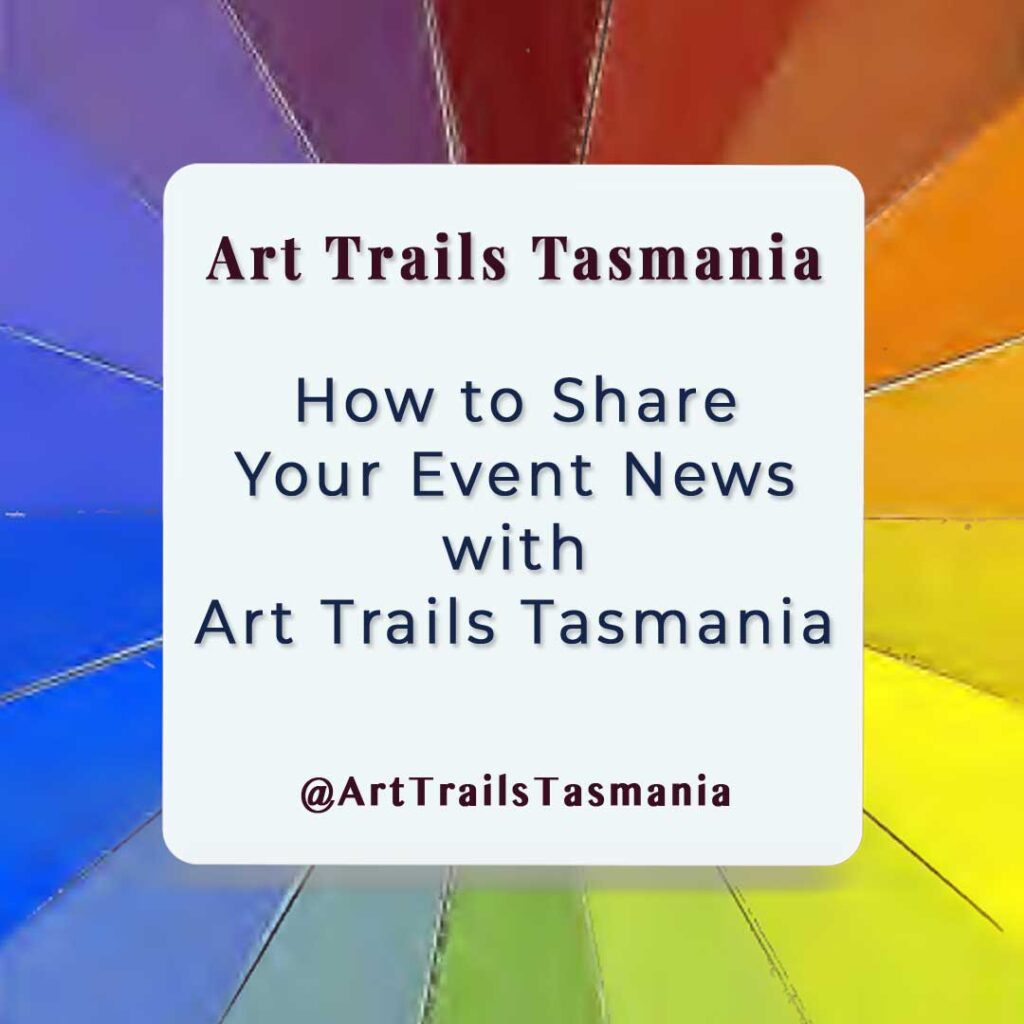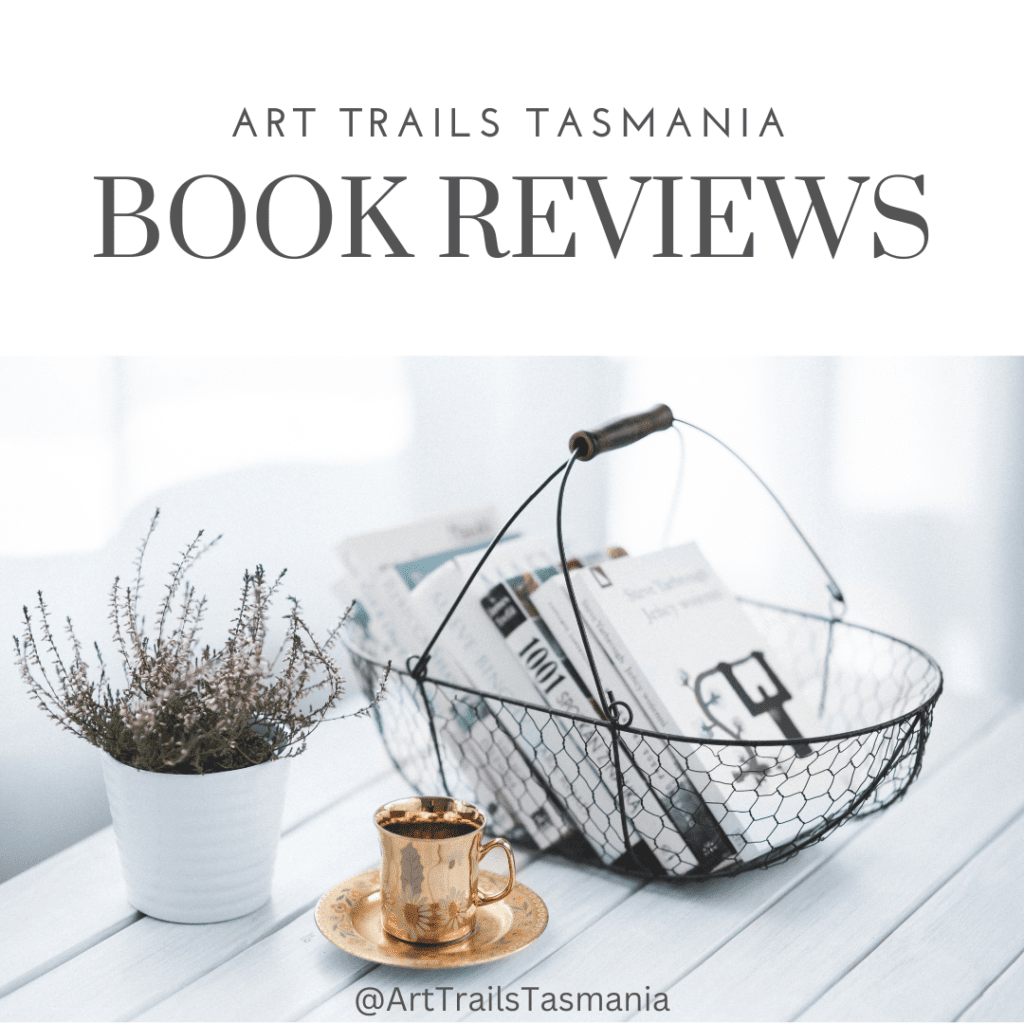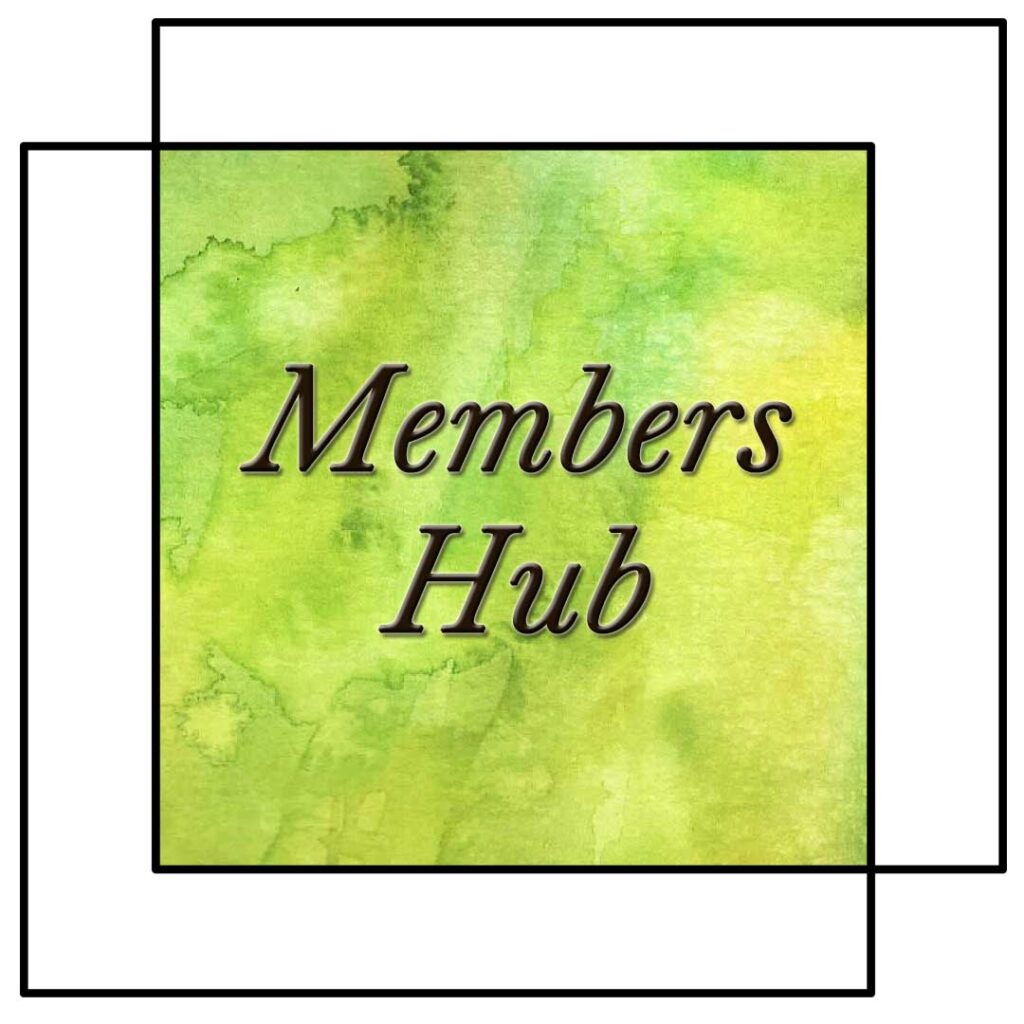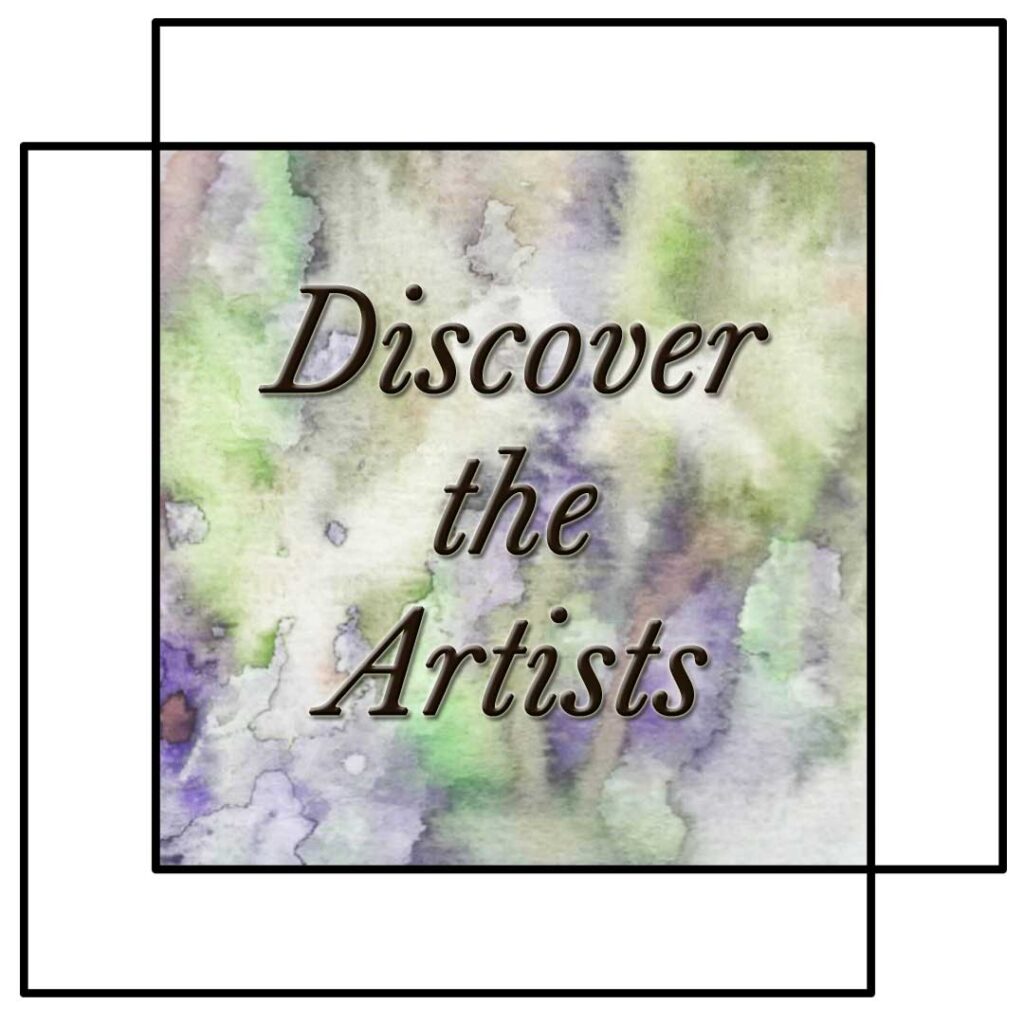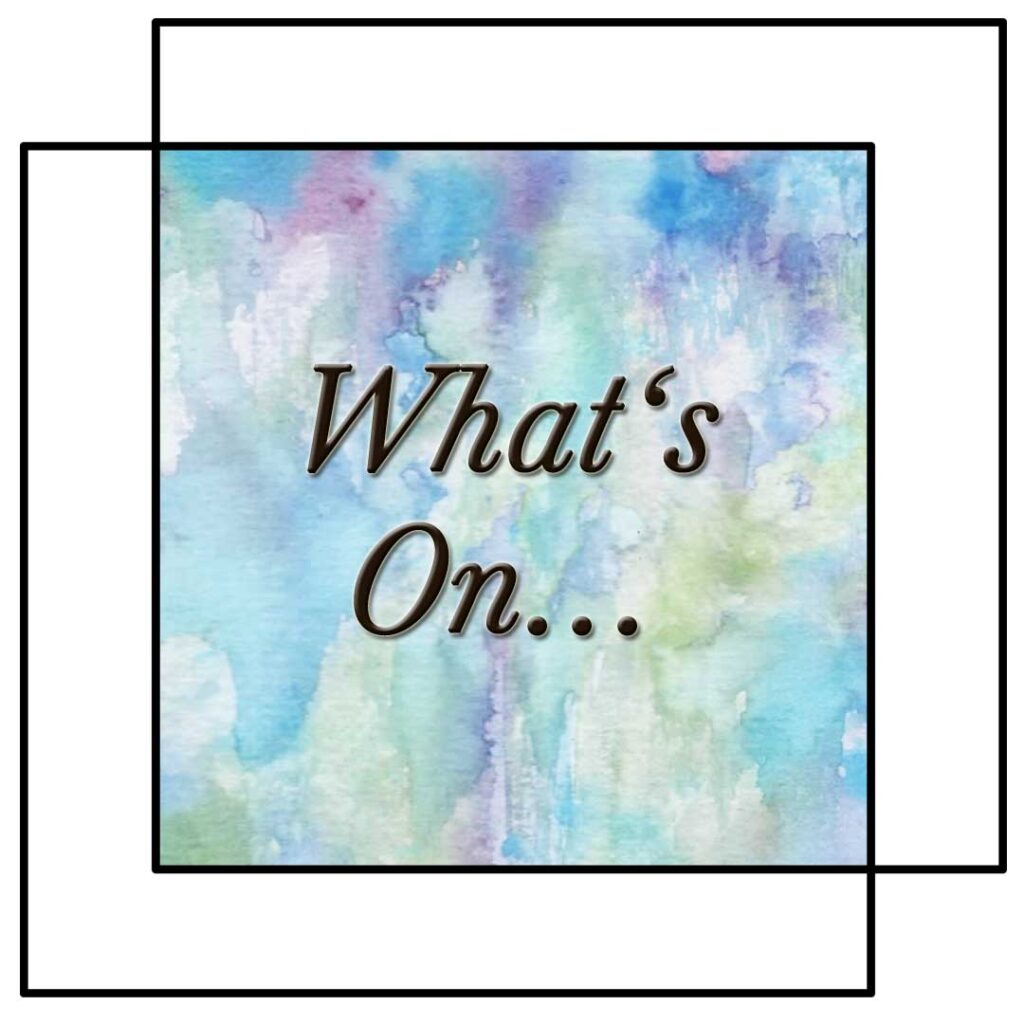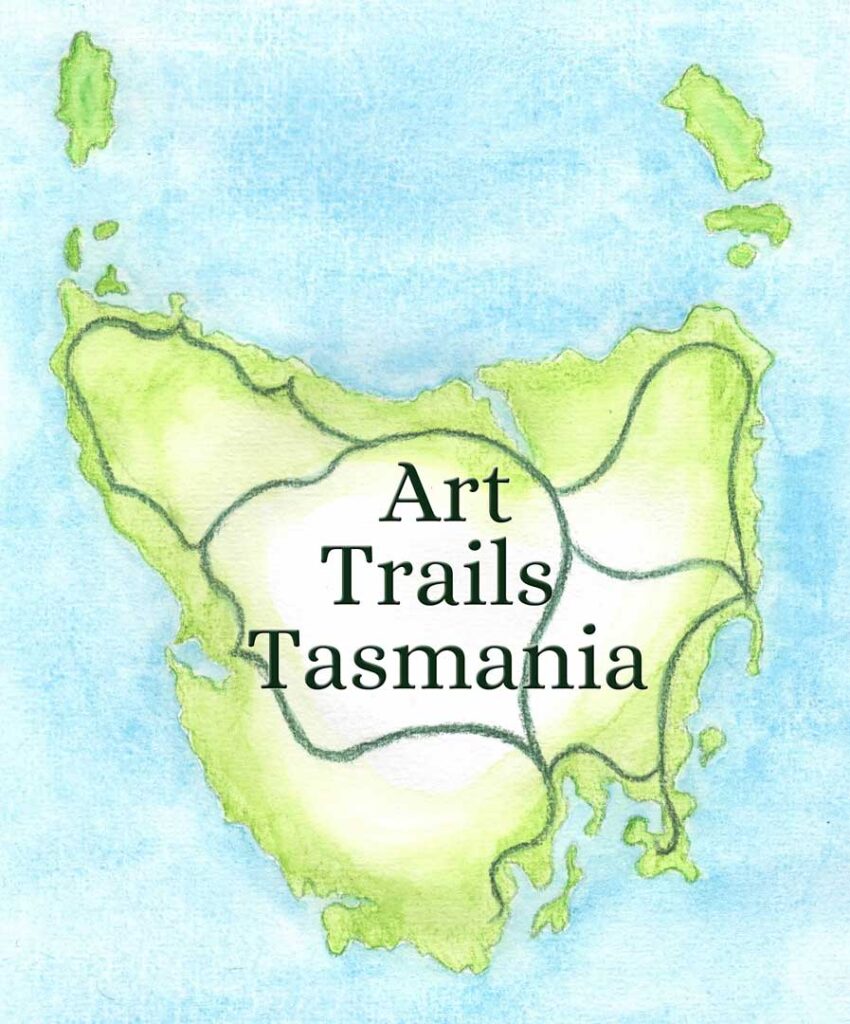Finding Joy in Restful Creativity
Creativity does not thrive on constant motion; it flourishes when given space to breathe. Rest is not absence, but a quiet resource that renews energy, focus, and imagination.
Where Part 1 explored how boredom, sleep, and daydreaming nurture the creative mind, this companion piece offers twelve practical rituals that turn rest into fertile ground for artistic growth.
These practices are intended to be lived slowly, integrated gently, and tailored to Tasmania’s landscapes — from the damp hush of rainforests to the bright clarity of coastal light.
Each ritual offers a way to pause with purpose: moments where the senses, body, and imagination find harmony. They encourage playfulness, creative mindfulness, and the joy of making without expectation.
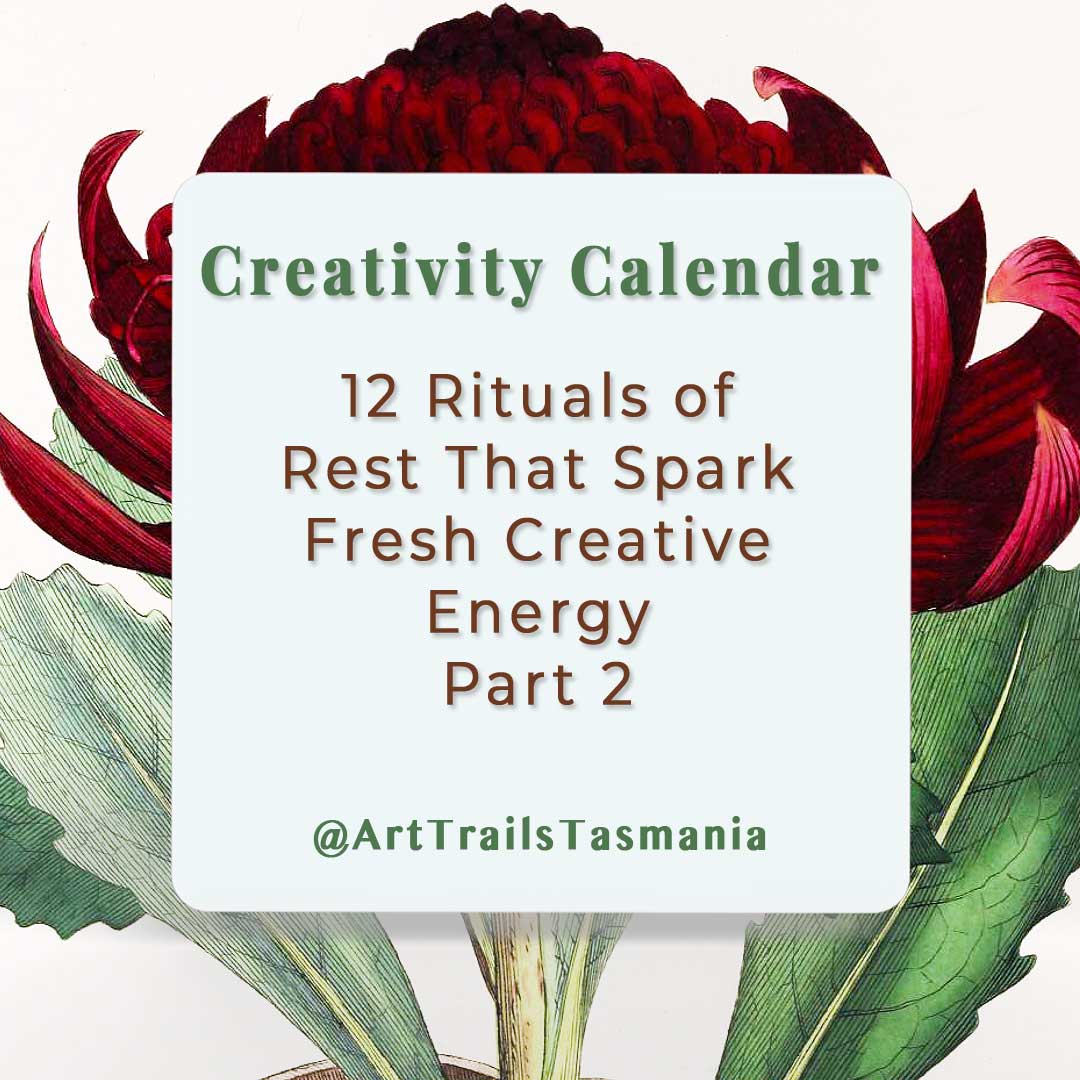
12 Practical Rituals to Explore Your Creativity
Here are 12 creative rituals for you to make your own:
1. Nature Journalling on Slow Walks
A slow walk becomes a moving meditation when combined with a sketchbook. Wander without hurry through a favourite patch of bush, a beach track, or a local garden.
Instead of counting steps or distance, attend to rhythm — the crunch of gravel, the rustle of leaves, the scent of blue gums.
Pause often to observe closely: a feather caught in grass, the spiral of a shell, a shadow pattern on bark.
Open the sketchbook and record what draws attention.
It might be a quick contour sketch, a splash of colour, or a few words describing texture or movement.
Allow imperfect marks; let curiosity lead. Nature journalling turns the outer landscape into a mirror for the inner one.
Over time, the pages fill with reminders of small wonders — a personal archive of sensory moments that quietly feed the creative spirit.
2. Blind Contour Sketching
Choose a small object — a seed pod, pebble, or flower — and place it before you.
Fix your eyes on the subject and, without looking at the page, let your pencil trace its outline in a single continuous motion.
Resist the urge to peek or correct. What emerges may look awkward, even comical, but that’s the beauty of the exercise.
Blind contour drawing teaches surrender and attentiveness. It shifts focus from results to the pure act of seeing.
This ritual dissolves stiffness in the creative hand and reminds artists that observation, not precision, is the heart of expression.
Repeating it regularly develops trust in the line itself — each curve and wobble becomes evidence of genuine looking.
Over time, this small act of discipline restores the beginner’s joy, where discovery outweighs outcome.
3. Five-Minute Creative Experiments
Creativity often thrives within small, well-defined limits. Set a timer for five minutes and give yourself a prompt such as “lines only”, “contrast”, or “movement”.
Choose any medium — pencil, collage scraps, ink, or watercolour — and start. The time pressure silences the inner critic and invites spontaneity. When the timer sounds, stop.
This ritual is a playground for the imagination.
Because the commitment is brief, experimentation feels safe; mistakes lose their weight.
Regular five-minute sessions keep creative muscles supple between larger projects.
Over weeks, these quick studies accumulate into an archive of textures, colours, and compositions that may later spark bigger ideas.
Above all, this simple ritual celebrates play — a reminder that joy and curiosity are the natural states of a healthy creative practice.
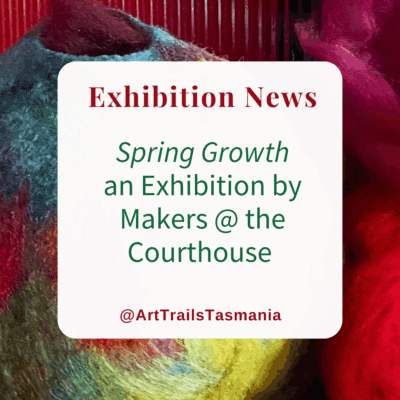
The Makers at the Courthouse Spring Growth Exhibition
Be sure to explore the inspiring and creative treasures featured in the inaugural Makers at the Courthouse exhibition: Spring Growth.
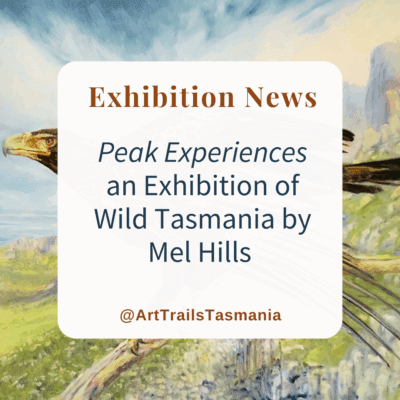
“Peak Experiences” an Exhibition Inspired by Wild Tasmania by Mel Hills
Immerse yourself in the wild and rugged beauty of Tasmania in the Mel Hills’ exhibition “Peak Experiences” and be inspired by breath taking vistas and wildlife!
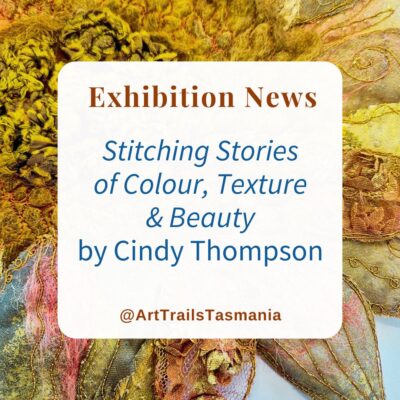
Stitching Stories of Colour, Texture and Beauty by Cindy Thompson Exhibition
Be inspired by textile artist Cindy Thompson at her exhibition “Stitching Stories of Colour, Texture and Beauty” & discover what’s possible with imagination, &
talent!
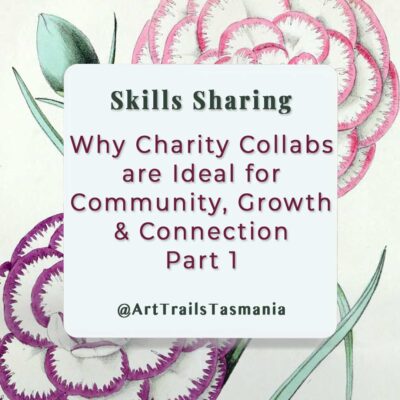
Explore Charity Collaborations for Community, Growth and Connection Part 1
Here’s why you should boost your art career & artist profile with Charity Collaborations. Support good causes, gain exposure, & connect with like-minded audiences.
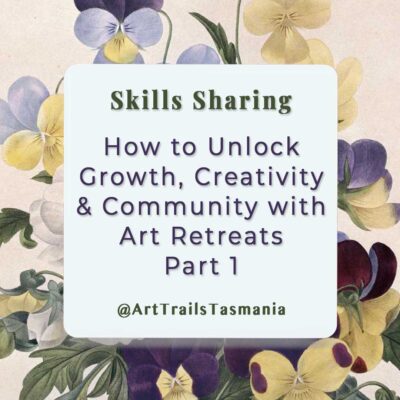
How to Unlock Growth, Creativity and Community with Art Retreats Part 1
Discover how to run successful art retreats that boost creativity, income, & connections. Part 1 of a 2-part series with practical tips for artists by Art Trails Tasmania.
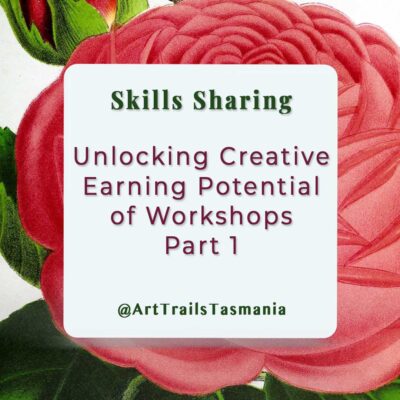
Unlocking Creative Earning Potential of Artist Led Workshops – Part 1
Part 1 on how to have financially successful artist-led workshops delves into what’s involved, the power of a calendar of workshops & the value of doing them.
4. Creative Mindfulness: Listening with the Eyes
Find a still spot — perhaps a veranda, riverside, or shady tree.
Sit quietly and soften your gaze toward one area of the landscape. Rather than labelling what is seen, let the eyes rest as if listening.
Notice how light alters colours, how wind stirs patterns, how edges blur when attention relaxes.
This form of creative mindfulness teaches presence through looking. It anchors awareness in sensory experience rather than analysis.
Over time, such gentle attention seeps into drawing, writing, or crafting; perception becomes more nuanced, responses more intuitive.
Practised regularly, creative mindfulness it quietens mental chatter and restores focus. The world becomes richer, and in that richness, creativity reawakens — not forced, but invited.
5. Dream-Seed Journalling
Dreams are natural collaborations between imagination and rest. Keeping a notebook beside the bed allows fleeting images to be caught before they fade.
Upon waking, jot down fragments — colours, words, feelings, odd scenes. Resist editing or interpretation.
Over days and weeks, these scattered notes accumulate into a dream-seed journal: a collection of symbols that can later find form in sketches, stories, or designs.
Revisiting them offers surprising insights; recurring themes might whisper about new creative directions.
Even the act of recording deepens connection with intuition.
Dream-seed journalling reminds artists that rest continues to work quietly on their behalf, weaving unseen patterns that later blossom into tangible ideas.
6. The “No-Goal” Making Session
Allocate a stretch of uninterrupted time — perhaps an hour — to create without purpose.
Choose materials that feel inviting and begin without a plan. Follow impulse: make marks, tear paper, arrange objects, apply colour freely. The aim is to experience the process rather than produce an outcome.
In a world obsessed with results, the “no-goal” session feels liberating.
It dismantles pressure and rekindles curiosity. The mind rests because there’s nothing to achieve, and in that space, genuine exploration emerges.
Many artists rediscover playfulness through this approach — the kind that first sparked their love of making.
Some sessions yield accidental beauty; others end in mess. Both are equally valuable, for each session restores confidence in instinct and the joy of creation itself.
And it can be a surprisingly practical path towards revealing your own creative voice.
7. Micro-Rests in the Studio
Sustained focus can quietly drain energy, even when enthusiasm is high.
Introducing micro-rests within studio time preserves vitality.
Every 30–45 minutes, set tools down, close the eyes briefly, and take three deep breaths.
Look out a window, stretch hands, or step outside for a moment of sunlight.
These pauses recalibrate attention and prevent burnout.
They remind the body and mind that creativity benefits from rhythm — exertion balanced with ease.
Artists who incorporate micro-rests often notice more sustained flow and fewer mistakes.
Over time, the practice builds resilience; creativity becomes less a sprint, more a steady dance between action and recovery.
8. Seasonal Foraging and Material Play
Tasmania’s shifting seasons offer abundant materials for creative rest.
After rain, the ground gleams with leaves, twigs, and stones; in winter, the coast reveals shells and driftwood. Foraging is best done slowly and respectfully — take only what has already fallen.
Lay collected items on a workbench or windowsill. Let them remain there for days, perhaps weeks, without immediate use.
Observe how shapes and colours change as they dry or fade. Later, they might become printing plates, inspiration for textures, or the starting point for a sketch.
The act of gathering connects body and place, and the waiting period teaches patience. Creativity here grows from rhythm — a cycle of collecting, contemplating, and making.
9. Mapping the Creative Voice
A simple sketchbook exercise can clarify personal direction. Begin by choosing a word or emotion that resonates — “stillness”, “wild”, “renewal”.
Write it in the centre of a page. From that point, branch out with lines, shapes, or colours that echo the word. Add fragments of phrases, doodles, or associations that surface.
Over time, these maps form a visual diary of inner language. They reveal patterns — certain colours or symbols that repeat — offering clues about evolving themes.
This ritual encourages reflection without overthinking. It provides a restful way to engage creatively while stepping back from output.
Mapping the creative voice grounds practice in authenticity, showing that rest and reflection are integral to self-expression.
10. Visual Haiku Breaks
Keep a small poetry book or local art catalogue near the workspace. When energy dips, stop working and open it at random.
Read one short poem or study one artwork slowly, letting words or images sink in. Then, on a blank page, respond with three marks, three words, or a tiny sketch — your own “visual haiku”.
This ritual acts as a reset button for the mind.
The brevity of haiku encourages clarity, while the visual response reconnects feeling and form.
Practised regularly, it cultivates the ability to find depth in simplicity. It also bridges disciplines, allowing writing, art, and mindfulness to blend.
A single haiku break can shift mood, release tension, and restore creative rhythm within minutes.
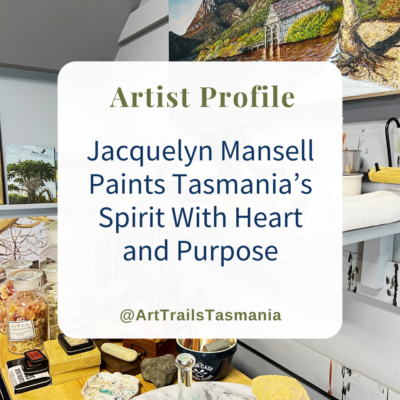
Jacquelyn Mansell Paints Tasmania’s Spirit With Heart and Purpose
Jacquelyn Mansell captures the wild beauty of Tasmania through soulful landscape art that connects artist viewer and place in a deeply meaningful way.
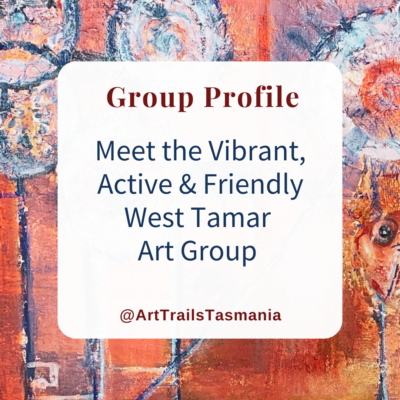
Meet the Vibrant, Active and Friendly West Tamar Art Group
Come meet the West Tamar Art Group, a vibrant community where artists & makers connect, create, & showcase their work in Tasmania’s stunning West Tamar region.
11. Seasonal Reflection and Sketch Exchange
At the end of each season, take an hour to revisit recent work — journal pages, sketches, photographs, or experiments.
Spread them out and look without judgement. Which ones still feel alive? Which carry quiet promise? Note these in a few lines on the back of the page or in a notebook.
If possible, exchange a few pieces with another maker — through the post, at a local market, or over tea.
Seeing one’s work through someone else’s eyes offers fresh insight. Reflection brings closure; sharing reawakens connection.
This gentle ritual of review and exchange ensures creative growth remains communal and cyclical, much like the seasons themselves.
12. Light Sketching at Dawn or Dusk
Dawn and dusk hold a softness that encourages contemplation.
Settle outdoors with a sketchbook or camera as the light shifts. Work quickly, responding to changing colours and forms. Allow imperfection; let the fading or emerging light decide when to stop.
These sessions nurture patience and humility. The transient light demands attentiveness but forbids overworking.
It invites surrender — a trust in fleeting beauty.
Repeated through the year, the practice documents the landscape’s moods and deepens connection with place.
For many, it becomes a daily meditation: a pause between sleep and activity, rest and creation, where the boundary between both gently dissolves.
This practice can be a lovely pathway to healing with creativity.
Rest as a Companion to Making
These twelve rituals transform rest into a creative ally. They work best when practiced lightly — woven into ordinary routines rather than scheduled as obligations.
Each one offers a different way to pause: through attention, touch, reflection, or play. Which ones are resonating with you? Are there variations on them that appeal?
For artists and makers, these practices align naturally with local landscapes and rhythms — sea air, shifting skies, and bush textures.
Rest becomes not a withdrawal but a listening, a moment where the mind slows enough to let imagination breathe.
When creativity is nourished by rest — by nature journalling, sketching, mindful seeing, and joyful experimentation — energy returns in fresh and surprising ways.
The voice of making grows clearer, the process becomes kinder, and the work itself begins to hum with renewed life.
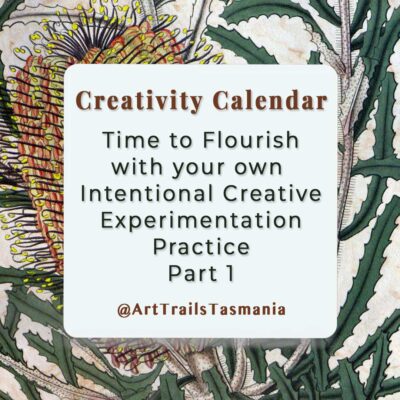
Intentional Creative Experimentation Practice Part 1
In part 1 of our series on intentional creative experimentation we look at what’s it is all about and how to flourish with this game changing practice.
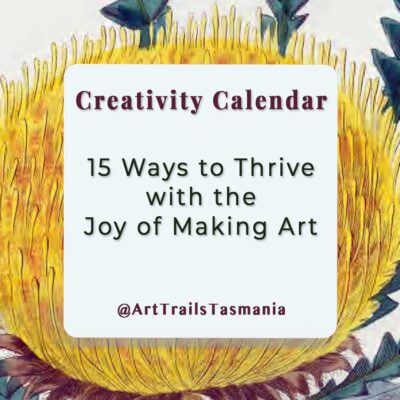
The Joy of Making Art
Explore 15 ways to thrive with the joy of making art so you grow as an artist and maker, explore your creativity and have more joy with Art Trails Tasmania.
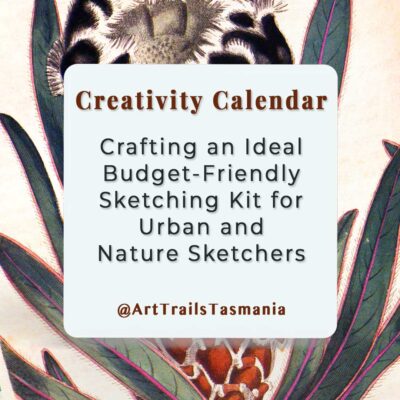
Crafting an Ideal Budget Friendly Sketching Kit for Urban & Nature Sketchers
Essential tips for crafting your ideal sketching kit. Balance joy & practicality with brushes, palettes & budget-friendly supplies for urban & nature sketching.
Read the Latest How To Blog Stories
Explore Charity Collaborations for Community, Growth and Connection Part 1
Grow, Flourish & Connect with Charity Collaborations Charity collaborations allow artists to partner with charities, using their creativity to support good causes while gaining exposure. These collaborations take many forms, such as donating artwork for auctions,...
Key Elements and Tips for Promoting Art Retreats Part 2
Promoting and Structuring Inspiring Art Retreats Part 2 of our series on art retreats focuses on key elements and promotional tips to make your events stand out. Art retreats are an excellent way to nurture creativity, offering a meaningful, immersive experience for...
How to Unlock Growth, Creativity and Community with Art Retreats Part 1
Creative and Financial Prosperity with Art Retreats Art retreats are invaluable for artists, makers, and art groups, offering opportunities for growth, creativity, and connection. In this first part of our two-part series, we explore why art retreats are so...
9 Bright Ideas for Artist-Led Workshops Part 2
Getting Started with 9 Ideas for Your Workshops In this second part of our series on workshops, we explore creative ways for you to grow both artistically and financially. Running workshops can be a fulfilling and sustainable source of income, while allowing you to...
Unlocking Creative Earning Potential of Artist Led Workshops – Part 1
Workshops: A Source of Inspiration and a Healthy Income Workshops are an incredible way for artists to expand their creative horizons and connect with others in meaningful ways and earn a important income from their creative talents. This is Part 1 of a series on...
Newsletters Made Easy for Artists
Crafting Compelling Newsletters for Artists & Creative Groups Newsletters are a vital tool for individual artists and creative organisations, offering a direct way to engage with your audience and build lasting relationships. However, planning out the content for...
Read the Latest Blog Stories and Flourish…
Knitted Wire Bracelet Workshop with Noelene Hammond
Have Fun Making Knitted Wire Bracelets This is a beginners knitted bracelet lesson. Learn how to knit your own bracelet or for a special gift. You will be using wire and seed beads in this lesson it is how to use the wire and hold the beads in place. You must know to...
Finding a Path to Healing with Creativity and Community Part 1
The Whispers of Creativity It seems that every stage of life throws up challenges, denting your heart and opening the doors to questioning what’s important, and for me, there’s always the whispers from creativity: “let creativity in, yours or ours”. In the last while,...
Jacquelyn Mansell Paints Tasmania’s Spirit With Heart and Purpose
Meet Tasmanian Artist Jacquelyn Mansell The greatest joy in my art comes from the profound connection between myself, the subject, and the viewer. Immersing myself in the landscapes and wildlife of Lutruwita (Tasmania) allows me to translate the island's raw beauty...
Discover Author Debra Clewer’s Harriet and Will: The Secret Rings
You're Invited to the Book Launch of "Harriet and Will: The Secret Rings" Smithton author Debra Williams (writing under the pen name Debra Clewer) is launching her Middle-Grade historical fiction/fantasy children’s novel, "Will and Harriet: The Secret Rings". When:...
How to Make the Most of Entering Exhibitions Like the Incognito Art Show
Making the Most of Exhibiting in Events Like the Incognito Art Show The Sydney-based Incognito Art Show is now Australia's largest annual art show. It is open to any artists intersted in taking part. It is an event where artists anonymously donate postcard-sized...
15 Ways to Reignite Your Creative Practice and Thrive Part 2
15 Practical and Exciting Ways to Find Your Path Back to Creativity Welcome back to Part 2 of our series on Finding Your Path to Creativity with your own creative practice! Whether you’re returning to a long-loved creative practice or seeking fresh inspiration, the...
7 Books for Creative Growth Book Review
Book Reviews for Art Lovers It is book review time with these inspiring books that are all about sharing inspiration, skills and leading you along creative paths of growth. Dive into Mastering the Art of Fabric Printing and Design by Laurie Wisbrun, The Wildlife...
Meet the Vibrant, Active and Friendly West Tamar Art Group
West Tamar Art Group: Making Art Amongst the Vineyard The West Tamar Art Group is a friendly and inclusive community that brings together artists, makers, and art lovers from across the stunning West Tamar region. Founded in 2013, the group was created to provide...
Reignite Your Creative Practice and Find Artistic Fulfilment Part 1
Finding Your Path Back to Creativity Finding your path back to your creativity, to your creative practice may seem daunting but can bring immense personal joy and satisfaction. Many members talk about in their Artist Profile story how they have the experience of...
Read What Our Members Say About Belonging
Join the growing, supportive artists community today and have your Artist story told here.
Belinda is doing a great job creating a professional looking artist hub online. Check out the profile I posted recently to see how well she does them. To all my artist friends let’s help make this THE go to place to discover local artists.
You won’t regret joining Art Trails Tasmania . It’s a welcoming community for creatives at any career stage.Becoming an Art Trails Tasmania member wasn’t a hard decision for me to make as it’s such a wealth of knowledge and support.Being member provides a quality way to showcase your creative endeavours and it’s quickly growing in reach.
We operate a home based picture framing business and recently joined Art Trails Tasmania as a means to giving us exposure to the wider artist community. We have almost immediately seen increase in activity thru our online sites, which I am certain will lead to more opportunities to grow our business.

